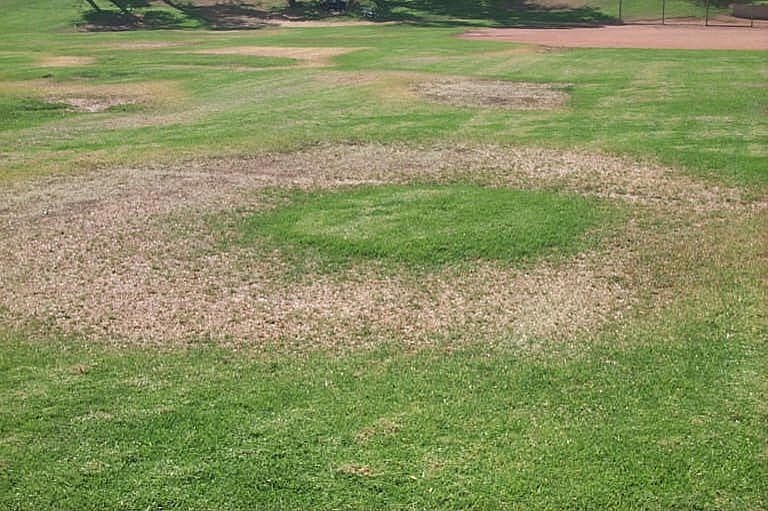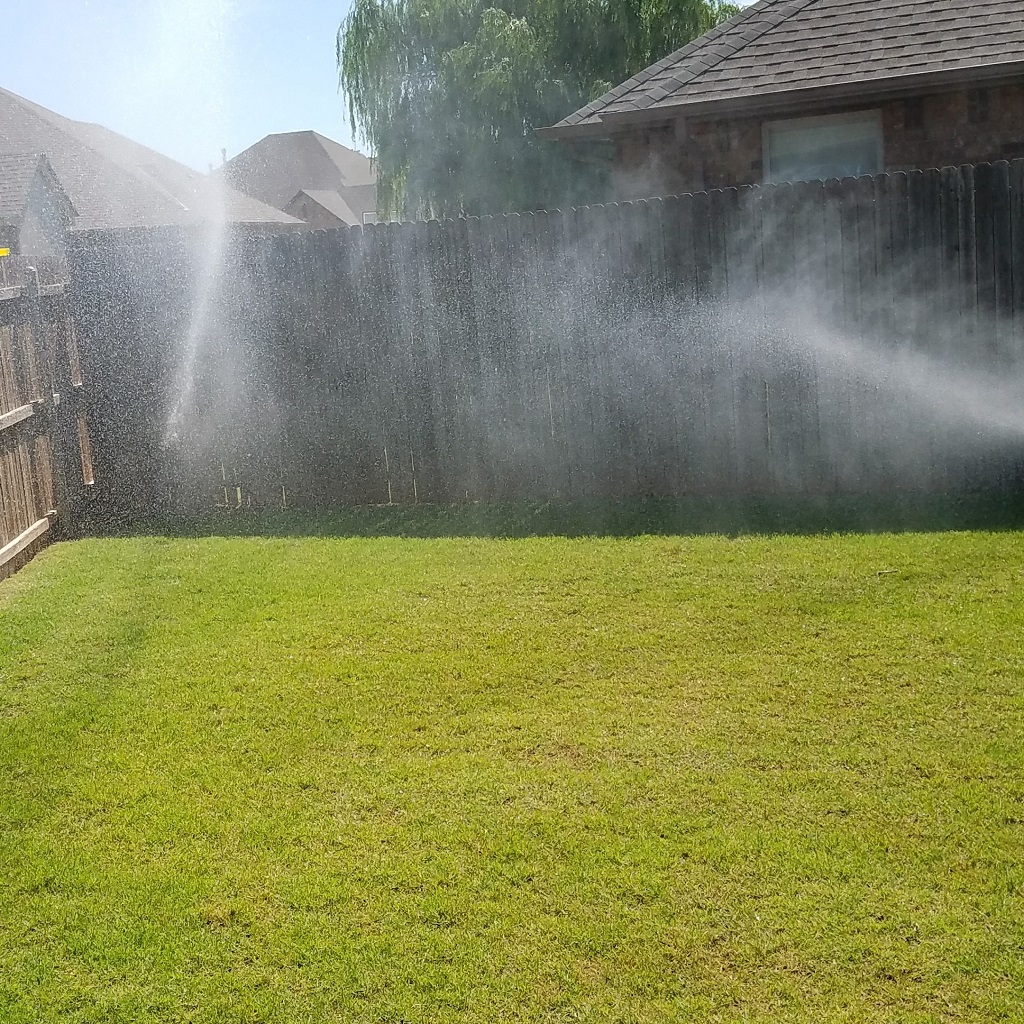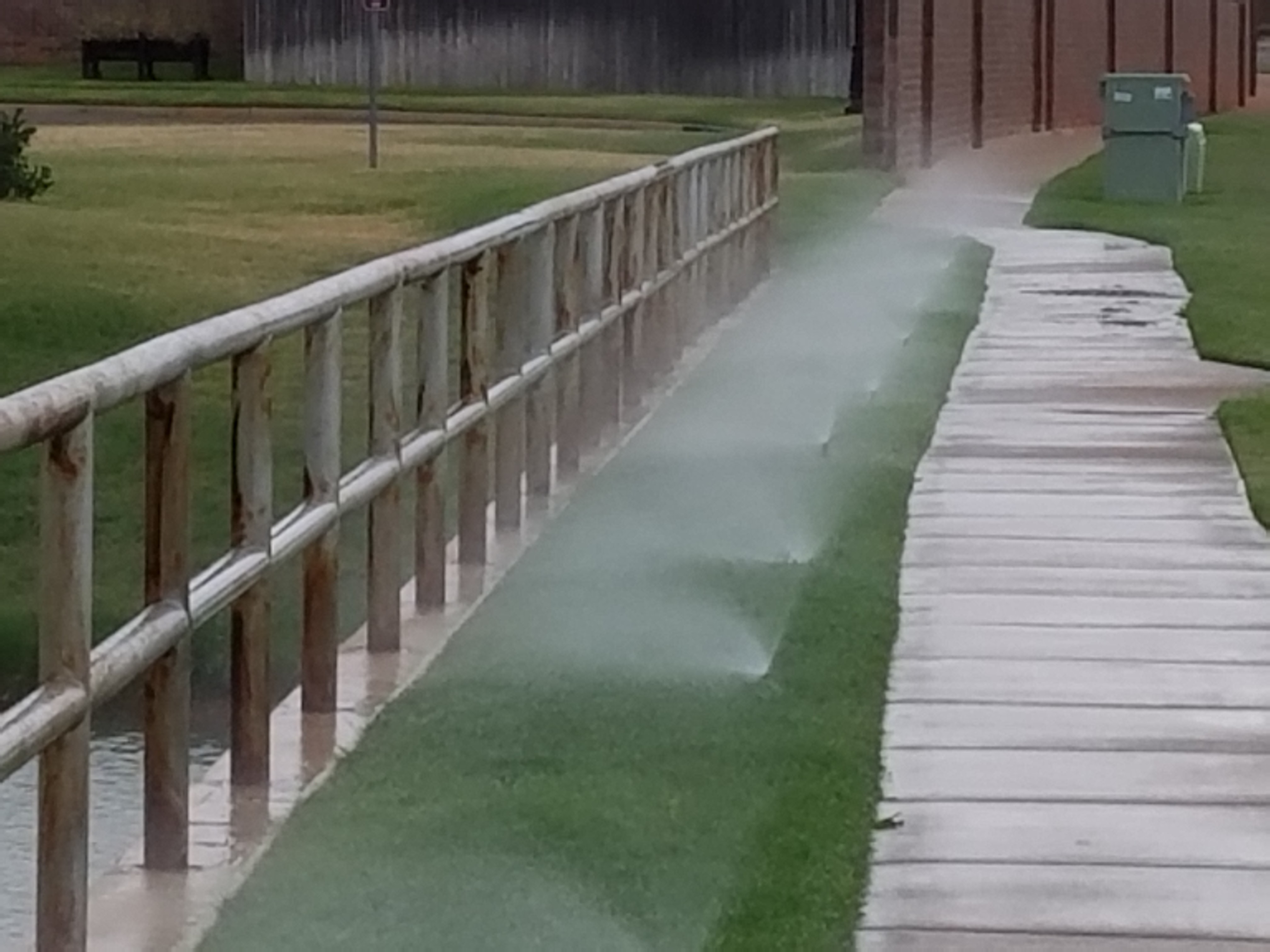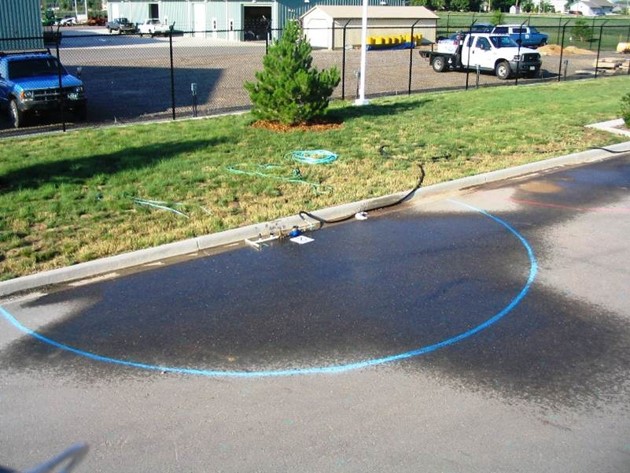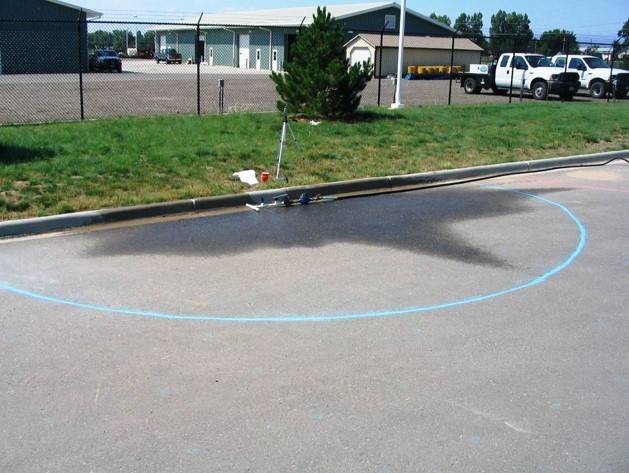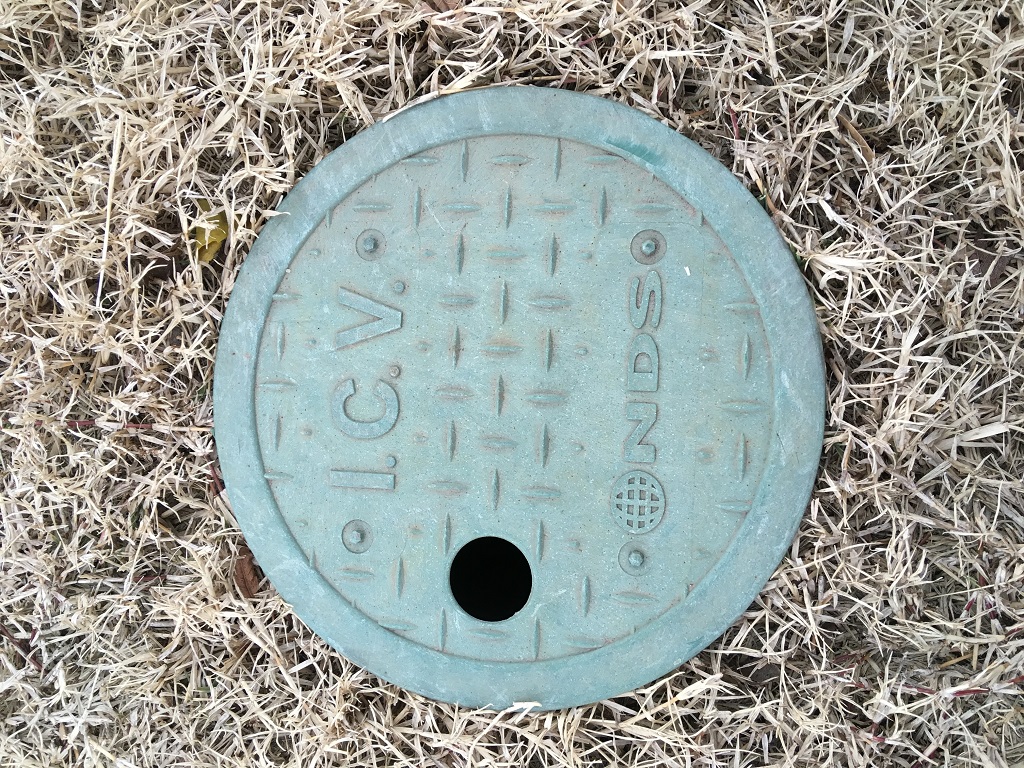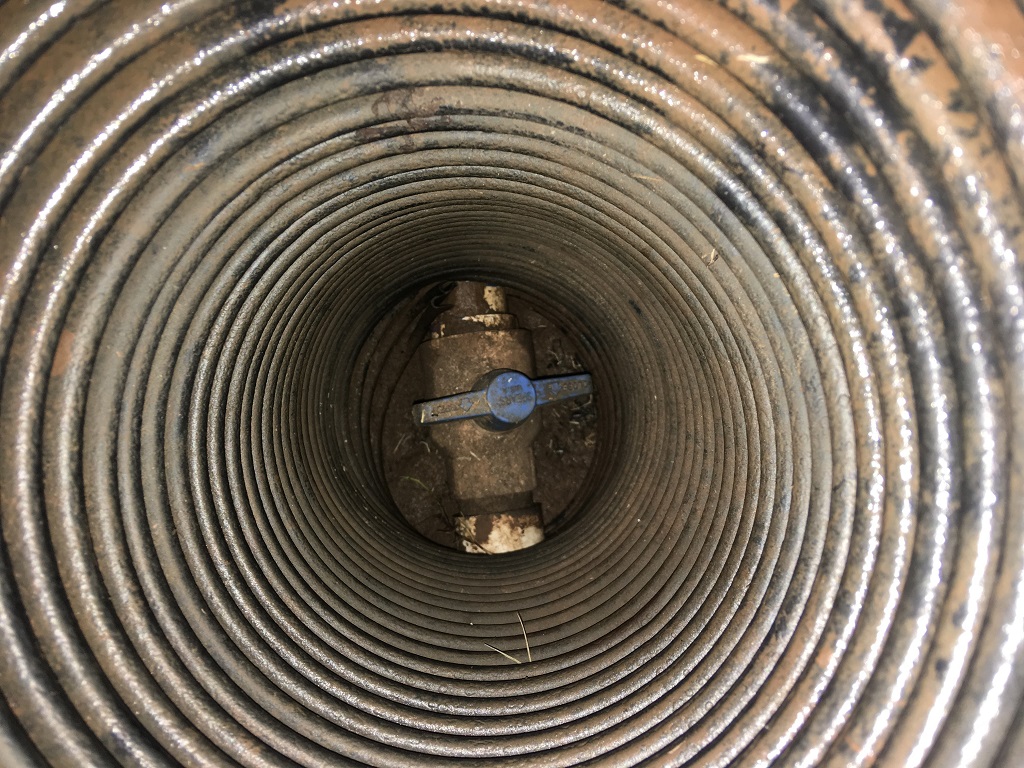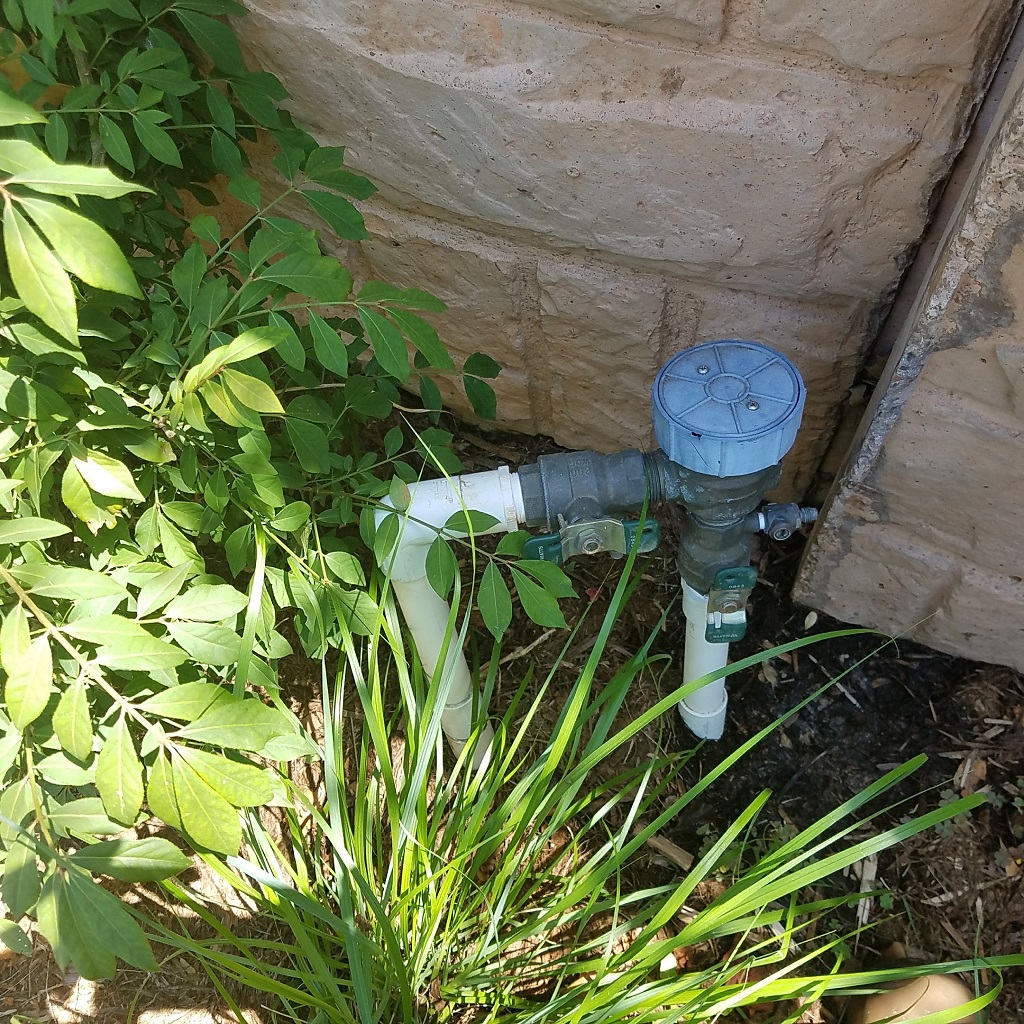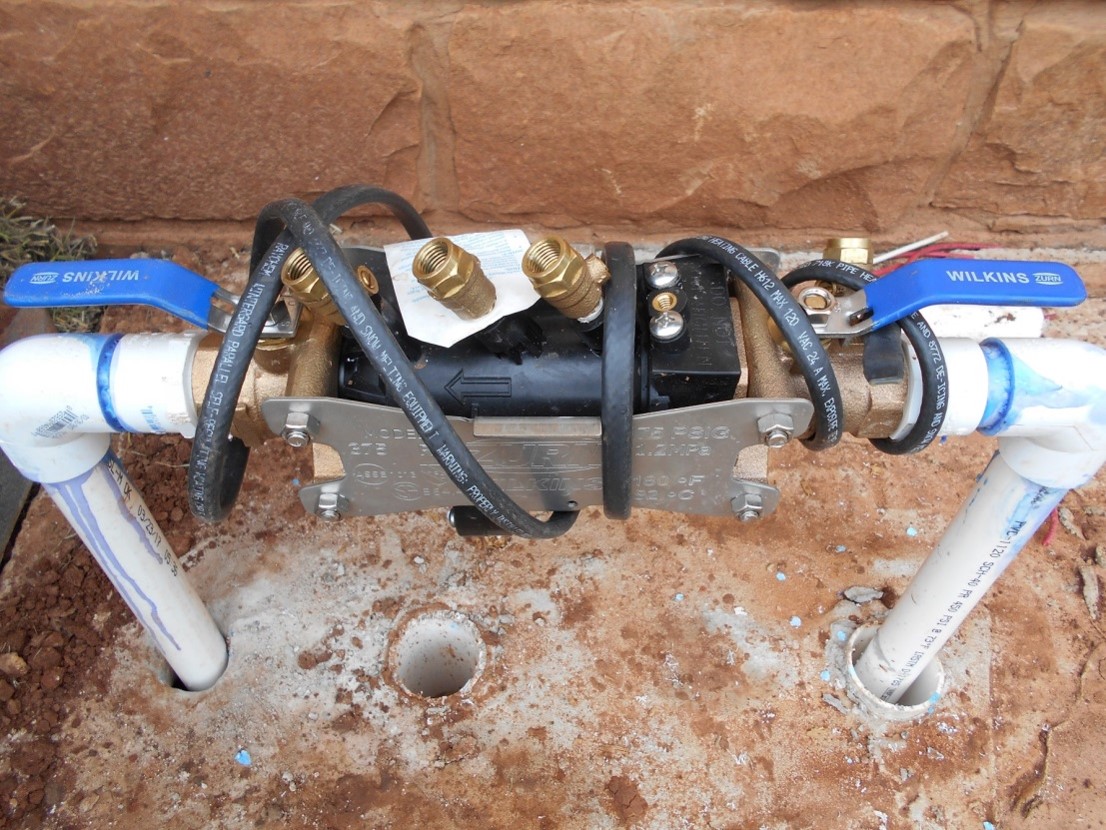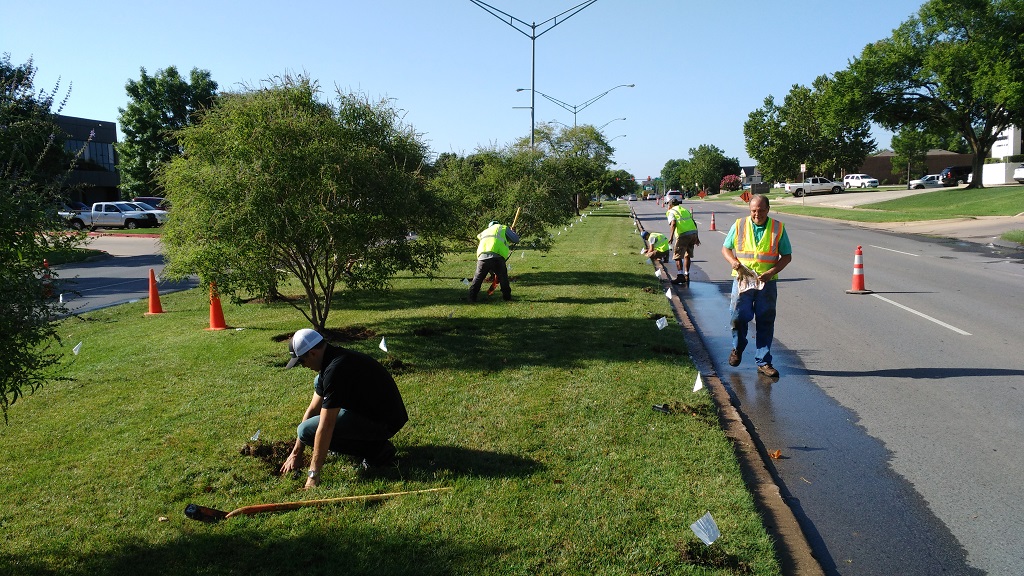Managing Pressure in the Home Irrigation System
The purpose of an irrigation system is to provide supplemental water to the landscape when rainfall is insufficient. A system that is properly designed, installed and maintained will utilize water resources in a sustainable manner. A critical component of irrigation efficiency is pressure management. High pressure is often overlooked during design and installation. Low pressure may indicate a maintenance issue or damage to the system. This fact sheet will discuss pressure management as a tool for improving irrigation efficiency.
Pressure is defined as a force per unit area. You have probably checked the air pressure in a tire and noticed that the gauge has units of psi, pounds per square inch. Residential water pressure is ideally about 40 to 60 psi, however, this can vary significantly based on location.
Impact of Pressure on the Performance of an Irrigation System
If an irrigation system has low water pressure, it causes a loss in irrigation efficiency. Some of the sprinkler heads may not pop up from the ground during operation. Water leaving a spray head or rotor will not reach adjacent heads and the spray pattern will not be uniform. Brown areas of the landscape that are not receiving adequate water may be evident, leading you to run the irrigation system longer. In some cases, there will be donut-shaped zones of brown grass around a sprinkler head (Figure 1).
Figure 1. Low irrigation pressure can lead to uneven irrigation patterns and poor plant health. Photo courtesy of David Gerken.
High water pressure causes a different set of problems. First is the potential of damage to the system. Just like too much air blown into a balloon, the components of an irrigation system can break if the pressure becomes too high. This is most likely to occur where pipe is joined with a PVC fitting. The second problem associated with high pressure is more common, a loss of irrigation efficiency. When the pressure at a spray nozzle is too high, the water leaves the nozzle as a fine mist instead of large droplets. Carried away by the wind, the fine mist evaporates before reaching the landscape. If a mist is seen around spray heads, high water pressure is likely (Figures 2a and 2b). High pressure also increases the flow rate of irrigation equipment (Figure 3). If the pressure moves outside of the design range for the device, then the application uniformity can decrease drastically. For example, assume a sprinkler is operating at an optimum pressure of 30 pounds per square inch (psi). The spray is evenly distributed within the arc and the flowrate is 3.3 gallons per minute (GPM) (Figure 4a). Now, assume the pressure of that same sprinkler is increased to 50 psi, which is above the recommended operating range. The spray is no longer a uniform pattern and the flow rate has increased to 4.8 GPM (Figure 4b).
Figures 2a and 2b. High pressure in an irrigation system leads to misting and a reduction in irrigation efficiency. Photos courtesy of Oklahoma City Utilities Department.
Figure 3. Typical relationship of pressure versus flow rate. As pressure increases, the flow of water from a single irrigation head also increases.
Figures 4a and 4b. At an optimum pressure of 30 psi (top) the spray pattern is evenly distributed. When the pressure is increased to 50 psi (bottom) the spray pattern degrades while the flow rate increases. Photos courtesy of Brent Mecham, Irrigation Association.
How does Irrigation System Design Impact Pressure?
An irrigation system is made up of several components, and nearly all of these can impact the system pressure. Consider a typical residential irrigation system and its components (Figure 5). There are five main parts in a system that move water throughout the landscape: water meter, backflow preventer, control valves, mainline and lateral lines. Each of these has a pressure loss due to the friction associated with flowing water. An easy way to remember these pressure losses is by using the 5-4-3-2-1 rule of thumb, which indicates the pressure loss in psi from each of these five main irrigation system components (Table 1). Based on this information, expect a total pressure drop of about 15 psi (5 + 4 + 3 + 2 + 1) from the utility supply line to one of the sprinkler heads. If the utility is delivering water to your house at a pressure of 60 psi, then expect a pressure of about 45 psi at each head. However, the design of each specific irrigation system can cause this pressure to be higher or lower.
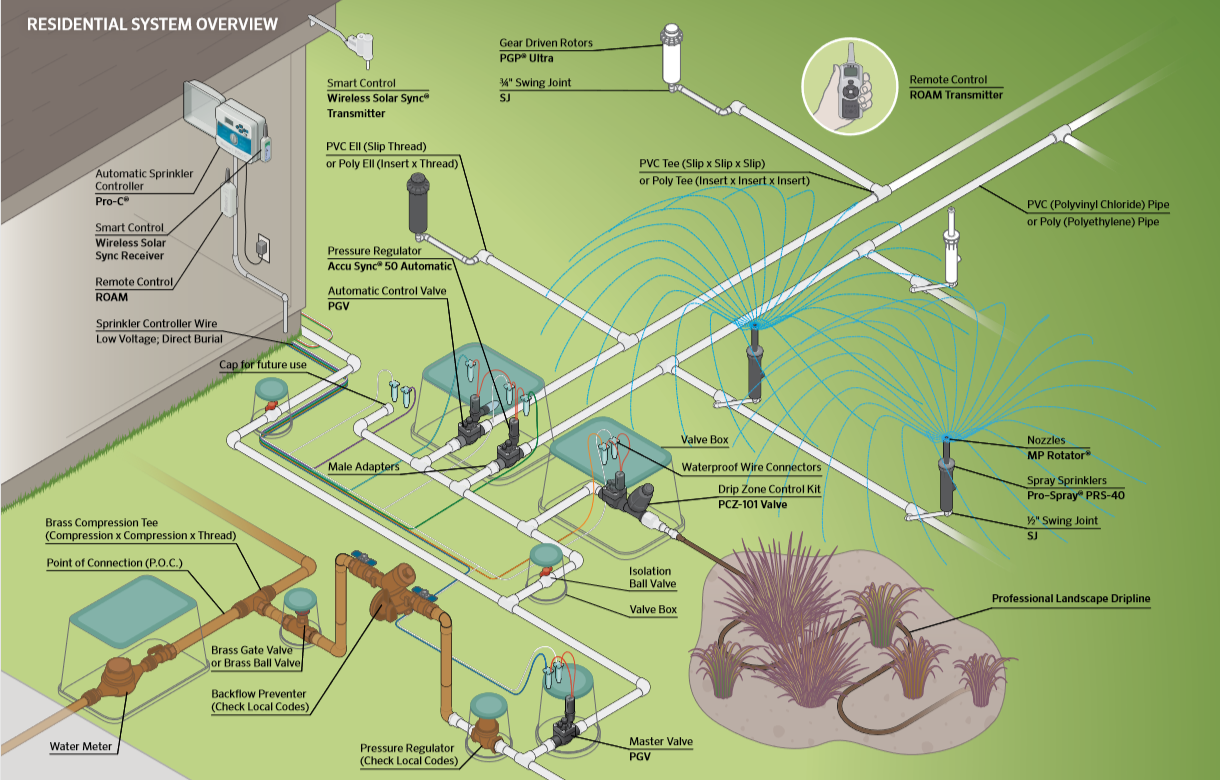
Different types of irrigation equipment have different ideal operating pressures for maximum efficiency. For rotors, this is about 45 psi, with an operating range of 25 to 65 psi. For spray heads, it is 30 psi, with an operating range of 15 to 30 psi. For drip lines, this is about 20 psi, with an operating range of 15 to 30 psi. Remember, flow rate and pressure are directly related to one another. If pressure is not well-controlled, irrigation efficiency will suffer.
Addressing Problems Associated with Pressure
If you suspect irrigation problems are associated with pressure, then a good first step is to measure the water pressure at one of the hose bibs on your house. This does not account for pressure losses within the irrigation system itself, but it can provide a rough idea of how much pressure is being delivered to the system. Measure the pressure at the same time of day the irrigation system runs, as pressure can vary throughout the day. A pressure gauge can be purchased for $10 to $20 online or at a local hardware store. Some of these will thread directly to the hose bib, while others will require an adapter. If a pressure of less than 25 psi or greater than 125 psi is measured, contact the utility department for further investigation.
If home pressure appears to be acceptable, but the irrigation pressure seems low, check the following items.
- Verify the isolation valve for your irrigation system is completely open. This should
be located in a green valve box somewhere between the water meter and backflow prevention
device (Figures 6a and 6b). Sometimes the valve box can become covered with grass.
Probing the grass with a screwdriver may help locate the lid.
Figures 6a and 6b. The isolation valve is typically located in a small green valve box near the water meter or backflow preventer. This valve is in the closed position. Photos courtesy of Kevin Moore.
- Verify the valves are completely open on the backflow device. There are several different
styles available, but the pressure vacuum breaker (PVB) and reduced pressure principle
assembly (RPA) are common in Oklahoma (Figures 7a and 7b). Backflow devices are typically
located outside, but may be found in the garage in newer homes.
Figures 7a and 7b. Backflow preventers are designed to keep irrigation water from flowing back into the pipes used for drinking water. A pressure vacuum breaker (top) and a reduced pressure principle assembly (bottom) are two common backflow devices in Oklahoma. Note that both of the green- or blue-handled valves are aligned with the pipe. This is the fully open position. Photos courtesy of Robert Reaves
- Inspect the lawn for any obvious water leaks. Since the piping is buried underground, look for soggy locations that never seem to dry, or lush patches of grass in an otherwise dry location.
- Turn on the irrigation system and look for broken heads. This could be an obvious fountain of water coming from one of the heads or a stream of water coming from the base near the ground. Make repairs as needed.
- It is possible that the system was installed with undersized pipe and too many sprinkler heads on a zone. Low pressure can be addressed by changing to lower flow nozzles or decreasing the number of heads in the zone. Contact an irrigation contractor for assistance in evaluating your system.
The pressure associated with a fluid at rest is referred to as static pressure. When a fluid is in motion – like when it flows through a pipe – the pressure will drop along the length of the pipe due to friction. The pressure of a moving fluid is referred to as dynamic pressure.
If the irrigation pressure is high, there are several ways to solve the problem.
- Install a pressure regulation device for the entire house. If the pressure is more than 80 psi to the house, then consider this option to protect the plumbing and appliances inside your home. Contact a licensed plumber for this project.
- Install a pressure regulation device at the irrigation system point of connection. This is the same type of device used for the entire house, but there may be circumstances when you would only need pressure regulation for the irrigation system. Contact a licensed plumber for this project.
- Regulate the pressure at the control valve for each zone. If you have a newer irrigation system, then you can probably install a pressure-reducing device directly on the control valve. A pressure reduction of at least 15 psi is required for these devices to function properly. One of these will be required for each zone in the system. A local irrigation parts supplier should be able to help determine if pressure regulation can be added to your existing control valves. These are typically located in a rectangular valve box with a green lid (Figures 8a and 8b). Remove the lid and try to identify the brand and model of valve that is installed in your system. If this is difficult due to the age or position of the valve, take a picture with you to the parts supplier. They may be able to identify the valve based on the photo. An irrigation contractor also can help to identify the type of equipment currently installed.
- Regulate pressure at the head. Most irrigation equipment manufacturers sell pressure-reducing spray heads and rotors that will reduce the pressure at each device to the optimum operating pressure. This is a relatively straightforward modification that can be made by the homeowner, but requires the replacement of the spray body internals for every head in the system. Some homeowners will make this modification over time on a zone-by-zone basis.
Figures 8a and 8b: Zone control valves
are typically located inside a green, rectangular valve box. There can be several
of these depending on the size of your system. Photos courtesy of Kevin Moore.
How Much Water can I Save with a High Pressure System?
It is fairly common to find high irrigation system pressures throughout Oklahoma communities. Oklahoma State University partnered with the City of Oklahoma City, Oklahoma City Beautiful and Urban Lawn and Landscape to retrofit the equipment in several median strips to demonstrate potential water savings associated with pressure regulation (Figure 9). In one case, the average pressure at the spray head prior to the retrofit was 60 psi. A total of 157 spray heads were replaced with pressure-regulated spray heads, designed to reduce the pressure at the nozzle to 30 psi. Based on manufacturer data, the total output of the system at 60 psi was 215 gallons per minute (GPM). At 30 psi, the output was reduced to 153 GPM. This is a difference of 62 GPM (Figure 10). The irrigation system was operated on an odd- or even-day schedule for 18 minutes each run. For a typical summer month, this pressure reduction should provide a savings of 16,740 gallons of water! This is the equivalent of 973 showers for a typical American. In addition to the water savings, less mist was generated during operation. This means that more of the water made it to the soil, where it could be used by the grass and landscape plants, and less water was carried into the street by the wind. A typical residential system contains about 40 spray heads and water savings are probably closer to 4,000 to 5,000 gallons per month. This is a good example of how a little work can go a long way toward improving the efficiency of an irrigation system and conserving a valuable resource.
Figure 9. Oklahoma City median retrofit project on North Classen Boulevard. Photo courtesy of Joshua Campbell.
Figure 10. Based on manufacturer data, the installation of pressure-reducing spray heads reduced water consumption by nearly 30 percent during one of the median retrofit projects in Oklahoma City.
Cost of a Pressure-regulated Irrigation System
The cost difference between standard sprays and rotors and their pressure-regulated counterparts is only a few dollars. Labor cost from the installation of pressure-regulated heads is identical to installation of standard heads. If you have high water pressure, then pressure-regulated heads or devices should always be used. The return on investment (ROI) when water pressure and water rates are high is typically one year or less. From then on, the homeowner has an irrigation system operating at optimum pressure, both saving money and applying water more uniformly to the landscape.
For additional information about maintaining the performance of an irrigation system, please refer to the following fact sheets.
- HLA-6610 Simple Irrigation Audit for Home Lawns in Oklahoma
- HLA-6615 Simple Irrigation Checkup for Home Sprinkler Systems
Kevin Moore, PhD
Extension Associate
Justin Quetone Moss, PhD
Research and Extension Specialist

